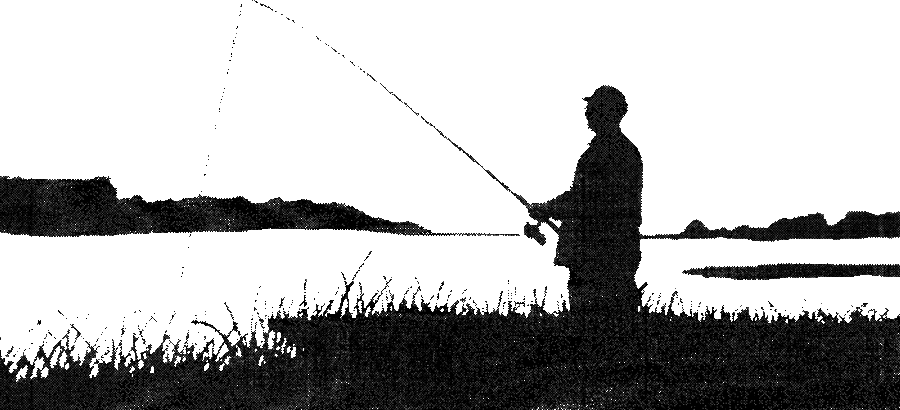From the earliest days of humans slogging through vast reaches of black needlerush, the shores of the Northern Neck have shaped the character of cultural activity and the pace of social change. The Nomini Indians who camped along the Potomac no doubt looked forward to the season of “cohonks” (named after the noisy bands of arriving geese) in anticipation of the plentiful oysters growing at the mouth of Currioman Bay and Nomini Creek.
The Indians even fashioned a form of currency from the oyster’s beautiful iridescent shell. Higher value was assigned to the beads carved out from the purple mid-sections. The more common, white beads were called “rhoanoke.” Strung on twine, the beads were traded for beaver skins and other furs. Three centuries later, historian Robert Burgess wrote of childhood memories of life along the shores of the Coan River, where on the wharf he witnessed the approach and subsequent departure of the magnificent steamer to Baltimore.
Its cargo included crates of chickens, locally grown and packed oysters, as well as tomatoes, pickles, and other local produce. During this time, the shorelines became the pivotal centers of trade and human interaction on the Northern Neck in an otherwise sparsely populated land. Throughout time, the same shorelines marked the beginnings and endings of tremendous natural change.
The Many Faces of Shorelines
The Northern Neck of Virginia claims a remarkable 1,109 miles of tidal shoreline, edges that are influenced by incoming and outgoing tides twice daily. These lines in the sand were drawn about 15,000 years ago when the glaciers last headed north and the Atlantic rushed in to fill up the great estuary, Chesapeake Bay. The edges—where land meets tidal rivers and the bay—are dynamic environments in a constant state of flux because of their exposure to a number of natural forces: winds, tides, wave action, and periodic storm events. The result is a place where nature redraws the boundaries on occasion. You know this process, of course, as deposition and erosion.

Both have naturally occurred since the beginning of time. But throughout the low country, erosion has been particularly troublesome along exposed southeasterly tips of the coast and along the southern banks of tidal rivers (places like Smith Point and the northern shores of Windmill Point, for example). That’s because the rivers of the Northern Neck run in a northwest to southeast direction, while powerful winds associated with big storms, for the most part, come from the northeast or northwest. The combination spells trouble for southern banks. The overriding lesson to be learned from regional weather patterns: don’t build too close to the water and, if you have an erosion problem, seek the advice and expertise of professionals.
Shorelines on the Northern Neck span a variety of coastal marsh types, sandy beaches, and dunes (generally found in Northumberland and Lancaster counties), and upland bluffs (more familiar sights in Richmond and Westmoreland Counties, but found all the way to the bay). But we must also remember those “armored” places along the lower Potomac and at the mouth of the Corrotoman and Dividing Creek, where several miles of shoreline have been bulkheaded and otherwise hardened to stabilize the near-shore environment for boats traveling to and from a string of marinas.
Generally speaking, beaches and sand dunes are places dominated by coastal marine forces: saltwater, and wave and wind action. An impressive number of tiny insects and worms eke out a living here, for the most part invisible to human observation. Dunes help to stabilize the shifting margins, and plants such as American beach grass and Atlantic coastal panic grass keep the shifting sands in place.
Marshes are grass plains with or without hummocks and woody shrubs, like marsh hibiscus, elevated no more than three feet above mean low water. “Fastlands” are the first habitats back, or upland, from marshes, elevated three feet or more. Expect to find bayberry and groundsel tree in these habitats.
Upland bluffs are noteworthy for the absence of grass or other vegetation at the water’s edge. They are present along many miles of the Potomac and Rappahannock, where their brown buttresses reach upwards of 140 feet.
Coves
Scattered throughout coastal shorelines and major rivers of the bay are places where natural topography, subjected to ongoing physical forces, has created coves. These are sheltered areas, quite responsive to tidal influence. For instance, they may be shallow or even dry at some point during the day. Because they are protected, they are considered low-energy zones not as vulnerable to erosion. It is in these shallow waters that receive good sunlight below the low-tide line that underwater grasses proliferate, along with young fish and ducklings that seek shelter and food among them. Birds of prey fly overhead, working the water for their next meal. It is also here that many folks come into closest contact with the Northern Neck, on a fishing or crabbing boat, or sitting in a canoe with binoculars in hand.
SAV
Like upland rivers and streams flanked by marshes and wetlands, coastal shorelines are home to underwater grasses, called submerged aquatic vegetation (or “SAV”). On the Northern Neck, widgeon grass (Ruppia maritime) is most common along the coastline, especially abundant near Reedville and lower segments of the Rappahannock, where it grows along with eelgrass (Zostera marina), which has been transplanted by a corps of volunteers throughout the Corrotoman system. The presence of thick underwater grasses speaks to the overall quality of water here. Grasses serve as nursery grounds for a wide range of juvenile fish and other creatures, including molting blue crabs. They also are prized by dabbling ducks—canvas-back, greater scaup, and red-breasted merganser.

Keeping Your Soil at Home
Unfortunately, the clearing of so many miles of shoreline and upland properties has resulted in too many tons of soil and nutrients washing off the land, choking the rivers and bay. Suspended in the water column, this sediment blocks sunlight and over-enriches the water, causing algal blooms that later die and, as they decay, rob the water of oxygen. The result: a condition called hypoxia, which makes it difficult, if not impossible, for anything to survive.
With all of this natural and man-made erosion underfoot, and surely more to come with continued waterfront development, property owners on the shore need to carefully consider their susceptibility to erosion problems.
One way to analyze erosion potential is to define the land’s energy zone. If you have less than one mile of open water, your site is fairly protected. If you have between one and five miles of open water, you may have a small or large erosion problem depending on specific characteristics of your site. And if your property borders more than five miles of open water, you’re in a high-energy zone and will very likely need to consider installing a structure to stabilize your shoreline.
The Virginia Department of Conservation and Recreation’s SEAS office works closely with property owners to provide technical advice. Their services include a site review and recommendations about how to best solve the problem. They will help you with the permit process and can provide you with contractor names or places to buy vegetative cover, if you want to tackle the job yourself.

Also, the County’s land-use or planning-and-zoning office has someone available to advise you about shoreline plantings. While much of the advice is free, permits are required for most projects (except minor plantings).
Stabilizing your shoreline can involve any number of approaches, but is usually accomplished by vegetative cover, a riprap revetment, or bulkhead. Marsh grasses and other plantings work best in low-energy zones, and are recommended in medium-energy zones whenever practical. Plants naturally trap sand and sediment moving with the tide, and reduce wave energy at the shoreline, thus reducing further erosion. Unlike structural solutions, grasses filter runoff and pollutants from upland sites and therefore improve water quality. Like the submerged grasses they often border, marshes make wonderful nesting and resting sites for animals, and feeding spots for grazers like raccoons and muskrats.
Take a look at Shoreline Erosion Problems? Think Green, available from SEAS, for ideas to get you started. Specific grasses recommended for marshes and coastal areas are listed in the “BayScaping” section.
High-energy sites may require a structural solution and, if so, a riprap revetment is preferred over a bulkhead. Because of its gradual slope, a revetment breaks the energy of incoming waves and reduces potential erosion “side-effects” to adjacent properties. Bulkheads, by contrast, take a wave head on and cause a downward spiral, or undercutting effect, that may lead to erosion elsewhere, sometimes to adjacent properties. Any structure should be installed landward of existing marsh grasses. Ideally, you should join with all of your neighbors to deal with a shoreline erosion situation at the same time. Doing so will increase your effectiveness.
Don’t be afraid to seek out professional assistance, especially during the design phase. Otherwise, the next tropical storm moving up the Atlantic may wash your investment away.
One of Your Neighbors is Calling for Help!
Did you know that a beautiful little beetle that sports an unusual white shell lives in your neighborhood? Found in several locations along the beaches of Northumberland and Lancaster Counties, the Northeastern Beach Tiger Beetle is asking for a little consideration. It survives most of the year under the sand, in the inter-tidal zone, breathing and eating according to the whims of the tides. But during July and August, it moves upland a bit, near the dune line, to raise a family.
Whether living above or below the sand, the beetles are especially vulnerable to trampling—from dogs, toddlers, and other innocent pedestrians. You can help the beetle just by walking a few feet above the water line at high tide or a few feet below the water line at low tide when you’re out on a stroll.
This stretch of the Northern Neck is one of the last known concentrations of these gorgeous insects, which used to frequent the entire North Atlantic coast. Your re-directed footsteps along the beach will make a big difference to its ultimate survival.
